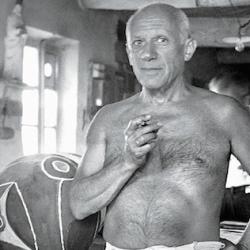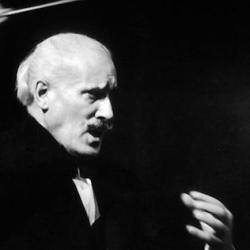Hal Foster’s Bad New Days is an assessment of the past twenty-five years of European and American art. Foster organizes his treatment under five themes – Abject, Archival, Mimetic, Precarious, and Post-Critical?
One will notice that “beauty” is absent. Today’s avant garde makes Francis Bacon look tame. One of Foster’s themes is the recoil from post-structuralist representationalism and a return to the real, but the real is a horrifying one.
Of Cindy Sherman’s photographs and assemblages (“a young woman with a pig snout . . . a doll with the head of a dirty old man”), Foster writes, “Here, as often in horror movies and bedtime stories alike, horror means, first and foremost, horror of the maternal body made strange, even repulsive, in repression” (12-13).
For many artists, the real emerges from trauma. Foster says this arises from “a dissatisfaction with the given model of reality as so much text or image only.” Postmodernism came to be seen as a supreme expression of consumer culture: “there was a disillusionment with the celebration of desire seen as an open passport for a mobile subject; here it was as though the real, dismissed in this performative version of postmodernism, were marshaled against a world of fantasy now felt to be compromised by consumerism.” AIDS and 9/11 left their mark, and artists came to see a “special truth” in “abject states, in damaged bodies” (26-27). For all the repulsiveness of this art, it often exhibits a cruciform longing: A number of the pieces Foster analyzes feature crucifixes, the abject object of Western art.
Foster traces other counter-postmodern moves in his treatment of performance art. He wonders if the critique of authorship has “done its job, even done it too well.” Barthes and Foucault attacked “the formalist idea of the artwork understood as a closed system of significance . . . and the popular idea of the artist seen as the found of all meaning” (133-4). They succeeded; the author died, and indeterminacy and “strategies for the participation of the viewer” rule the day (134).
But Foster that the it may place too much of a burden on the viewer, and that it might in fact undo the postmodern undoing of the artist: “there is a risk of illegibility here: often the death of the author has not meant the birth of the reader, as Barthes imagined, so much as the befuddlement of the viewer. This might serve only to reposition the artist as both origin and end of the world – the very default that was to be undone in the first place” (134).
He also worries that participatory art makes the activation of the viewer an end rather than a means: “Today museums cannot seem to leave us alone; they prompt and program us as many of us do our children.” That may valorize the museum in the eyes of our high-tech culture; it assures skeptics that museums aren’t places of detached contemplation but full of communication, activity, busyness. Yet that is a virtual admission that bourgeois critics of high art were right all along: It “confirms the negative image that some of its detractors have long had of it: that aesthetic contemplation is boring and historical understanding elitist, that the museum is a mausoleum” (135). Insistently participatory art trades in the prejudices that artists have long tried to challenge. And, today’s avant garde ends up looking nearly as coopted as the postmoderns of yesterday.














